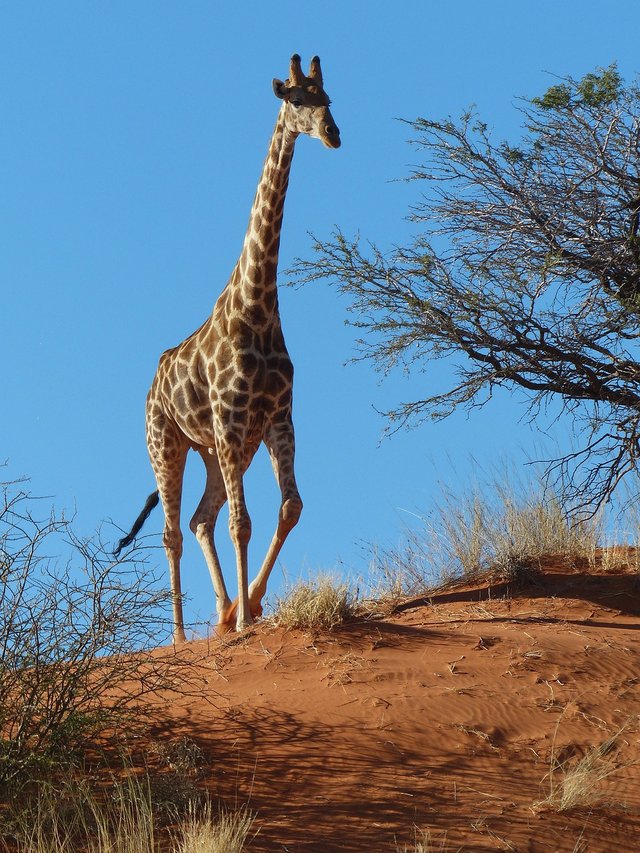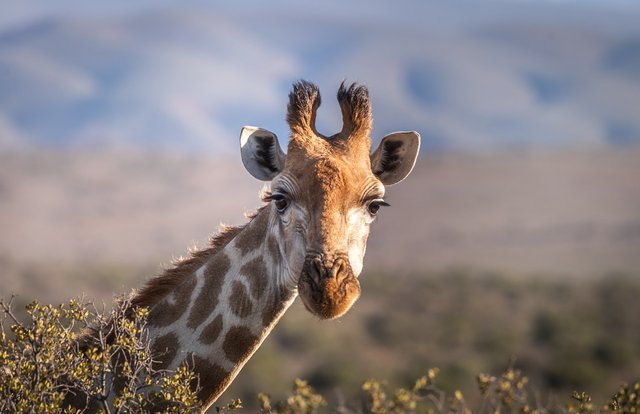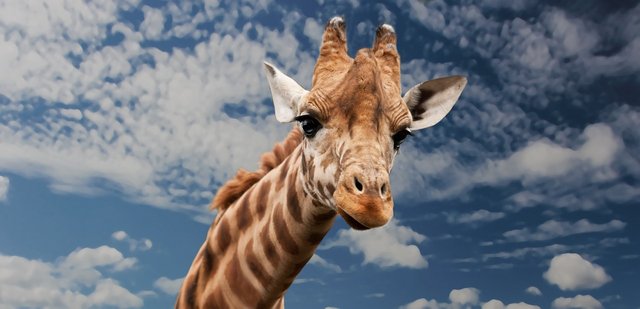
Giraffes are one of the most interesting creatures in the animal kingdom, known for their long necks and tall posture. Scientifically known as Giraffa camelopardalis, they are herbivorous mammals that are widespread in various savanna, grassland and open forest habitats in sub-Saharan Africa.
One of the most striking things about the giraffe is its incredibly long neck, which can reach more than six feet or about two meters. This long neck is not only for beauty, but also functions to reach tall leaves and plants that are difficult for other herbivorous animals to reach. Giraffes have a long tongue, which can be about 18 to 20 inches long, which helps them in picking up leaves from the high branches of trees.

The giraffe's body is covered with brown skin with polygon-shaped patches that are white or cream in color. These spotting patterns are unique to each individual, similar to human fingerprints, and help in their identification. Additionally, giraffes have two horns on top of their heads called ossicones. These ossicones are made of cartilage covered with skin and grow with age. The function of ossicones is not only for defense, but they are also used in ritual fights between males or in defending territory.
Giraffes live socially in groups called herds. A herd of giraffes consists of several individuals, usually females with their cubs. Males often live alone or in small groups and join herds of females when mating season arrives. They are plant-eating animals that spend most of their time foraging, eating various types of leaves, shoots, and fruit.
Despite their large size, giraffes are not particularly dangerous. They have several natural predators in their habitat, such as lions, hyenas, and occasionally cheetahs. Giraffes usually use their speed and height to escape predators, although they can sometimes use their horns to defend themselves.

The current population of giraffes in the wild is facing challenges, mainly due to habitat loss and illegal hunting. Conservation organizations work hard to protect giraffes and maintain their habitat in Africa. Public education and awareness are also important to ensure that the future of these beautiful giraffes is well maintained in the wild.
With their unique physical features, interesting social patterns, and struggle to survive in a changing habitat, giraffes remain one of the symbols of Africa's natural wonders. Understanding their lives and challenges helps us to better appreciate and protect their existence on this earth.
Downvoting a post can decrease pending rewards and make it less visible. Common reasons:
Submit
Upvoted. Thank You for sending some of your rewards to @null. It will make Steem stronger.
Downvoting a post can decrease pending rewards and make it less visible. Common reasons:
Submit